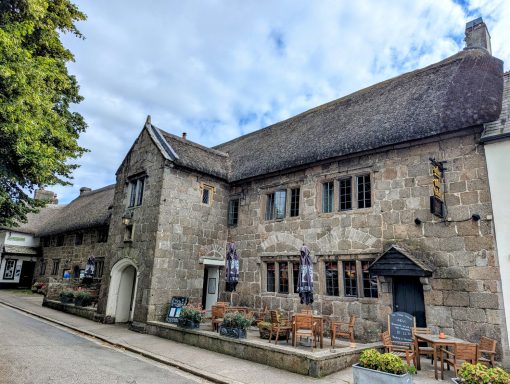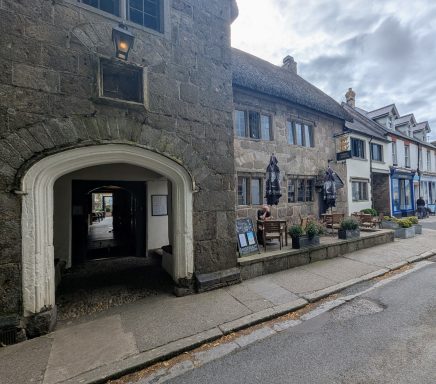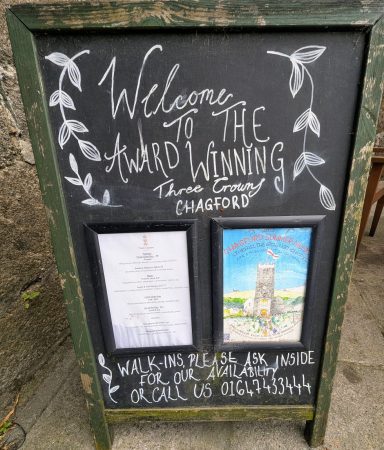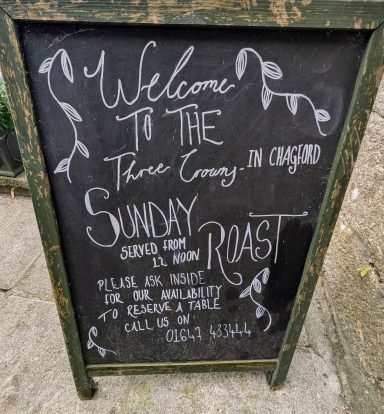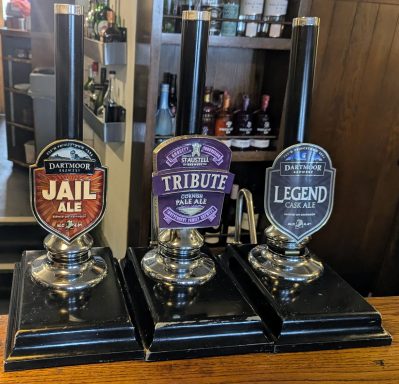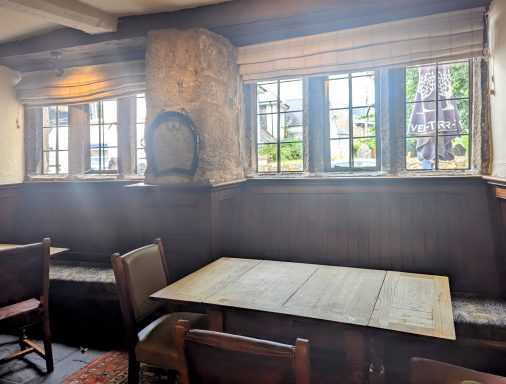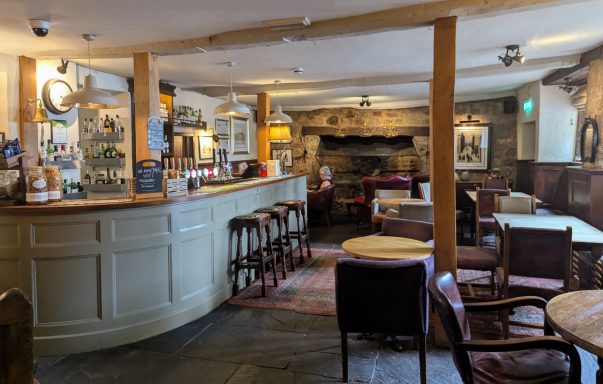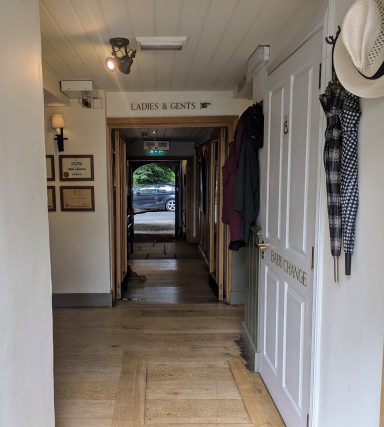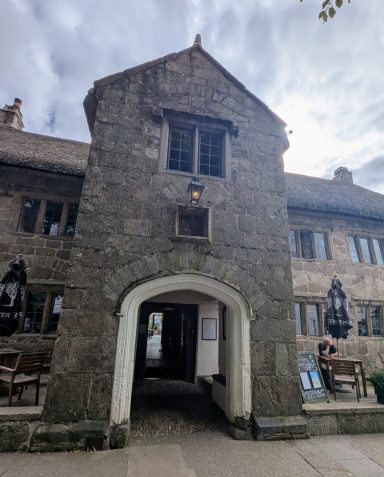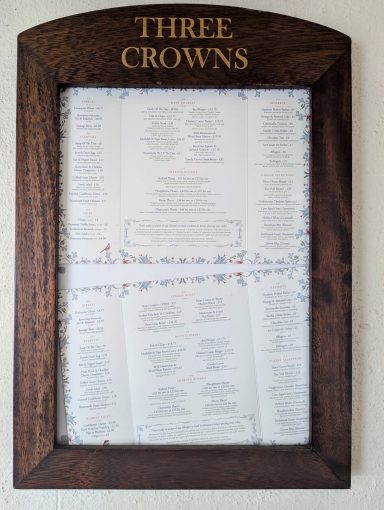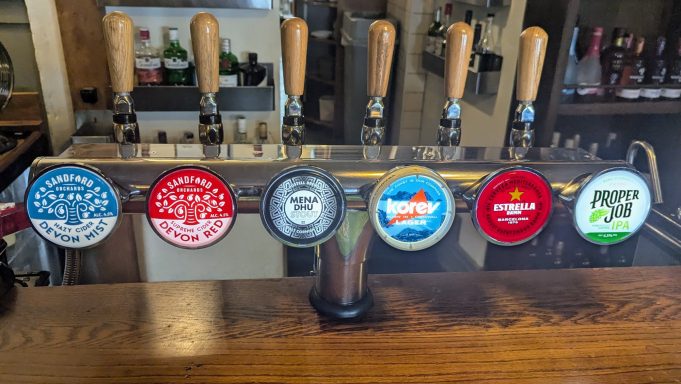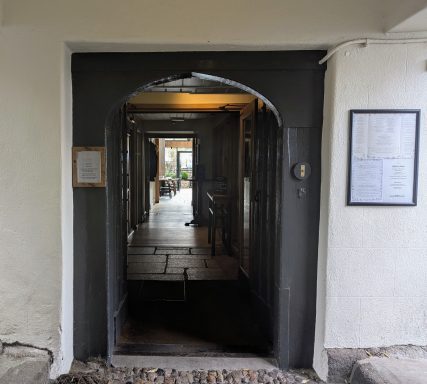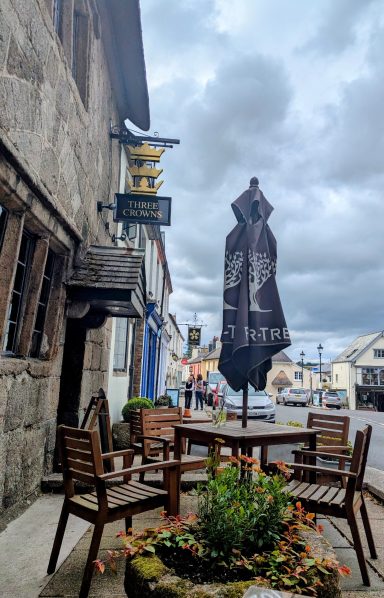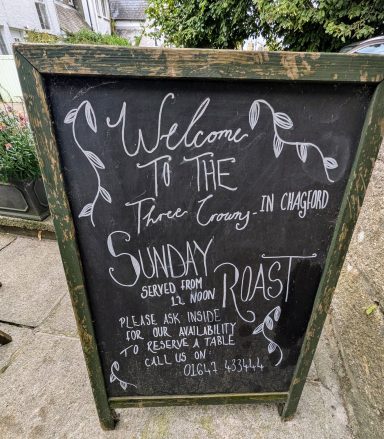Three Crowns
This historical hotel bar is far more than just a place to enjoy a drink; it's a living, breathing piece of the past. It's a genuine reflection of the building's deep history, an echo of a bygone era preserved in its architecture and atmosphere.
The bar's décor is a captivating blend of historical elegance and timeless appeal. A particularly remarkable feature is the huge, bright, glass-roofed conservatory. This masterful piece of architectural design not only floods the space with natural light but also creates a tranquil escape, seamlessly connecting the past to the present.
The building's exterior, crafted from rugged Dartmoor granite, is a testament to its enduring strength and regional roots. This robust, local stone anchors the hotel to its surroundings, a proud and permanent fixture in the landscape. The building also incorporates original oak beams and a mix of roof types, including thatch and slate, adding to its unique and storied character.
Stepping outside, you find a delightful outdoor beer garden, a traditional space that has likely welcomed guests for generations.
Finally, the wonderful staff are the perfect hosts. They blend modern hospitality with a profound respect for the building's heritage, acting as the true keepers of this establishment. They ensure that its amazing history and old-world charm continue to be celebrated and enjoyed by every guest.
P&P
Background....
Early History and Origins:
The building that houses the Three Crowns was originally constructed in the 1550s or 1560s as a grand town house for the prominent Whiddon family. Some sources even suggest it incorporates parts of a 13th-century monks' hospice. It was built by Sir John Whiddon, a judge and a leading figure in Chagford during the 16th and 17th centuries.
Transformation into an Inn:
It's unclear exactly when the property transitioned into a public inn, but by the late 17th century, it was known as "The Black Swan". This name was a direct reference to the Whiddon family crest, which featured a black swan. The building functioned as an inn providing food and accommodation for travellers, and likely stabling and a coach house for horses.
Change of Name and Renovations:
In the late 18th century, the inn's name changed to "The Three Crowns." The exact meaning of this new name is unknown, with possibilities ranging from a reference to the Worshipful Company of Drapers, the Maji (three kings), or even the Navy, Artillery, and Marines. The building has undergone several significant renovations and alterations over the centuries, including a major rebuild in the early 18th century after a fire, and further expansions in the 19th and 20th centuries to accommodate increased tourism.
Historical Significance and Notable Events:
The Three Crowns holds several points of historical significance:
Whiddon Family Connection: Its origins as the town house of the influential Whiddon family ties it deeply to Chagford's local history. The Whiddon family tomb and a tablet dedicated to Mary Whiddon, who was tragically shot on her wedding day in 1641 (a story thought to have inspired R.D. Blackmore's "Lorna Doone"), are found in the nearby St Michael's Church.
English Civil War: The inn played a role in the English Civil War. In 1643, Sidney Godolphin, a young Royalist poet and MP, was fatally wounded in a skirmish in Chagford and was brought to the Three Crowns' porch, where he died. His ghost is reputedly one of the inn's resident spirits.
Stannary Town: Chagford itself was one of four Stannary Towns on Dartmoor, administrative centers for the tin mining industry, which brought prosperity to the area.6 The inn would have been a hub for adventurers, miners, and legal professionals associated with this industry.
Architectural Heritage: The building is a Grade II* listed building, noted for its solid Dartmoor granite facade, mullioned windows, oak beams, and large fireplaces, showcasing its enduring historical architecture.
Today, the Three Crowns continues to operate as a charming and historic hotel, blending its rich past with
modern comforts.

